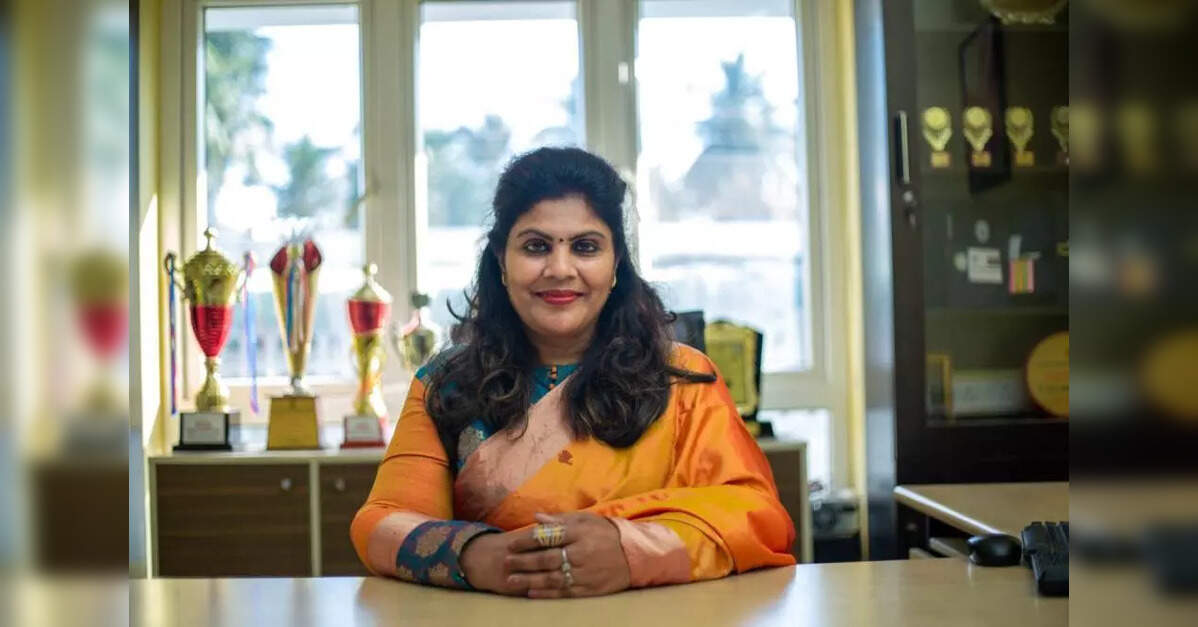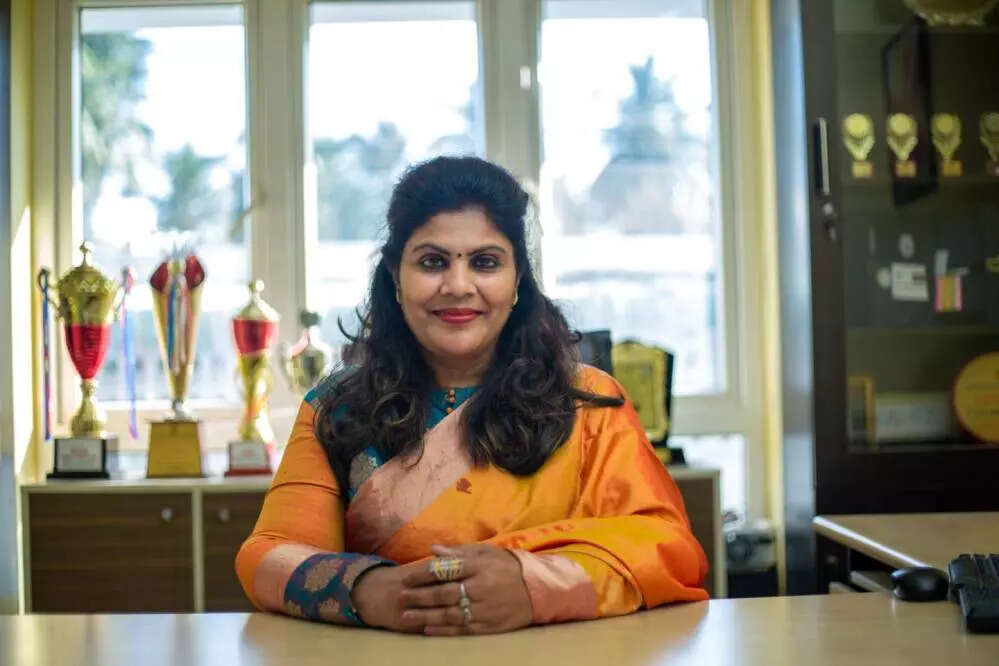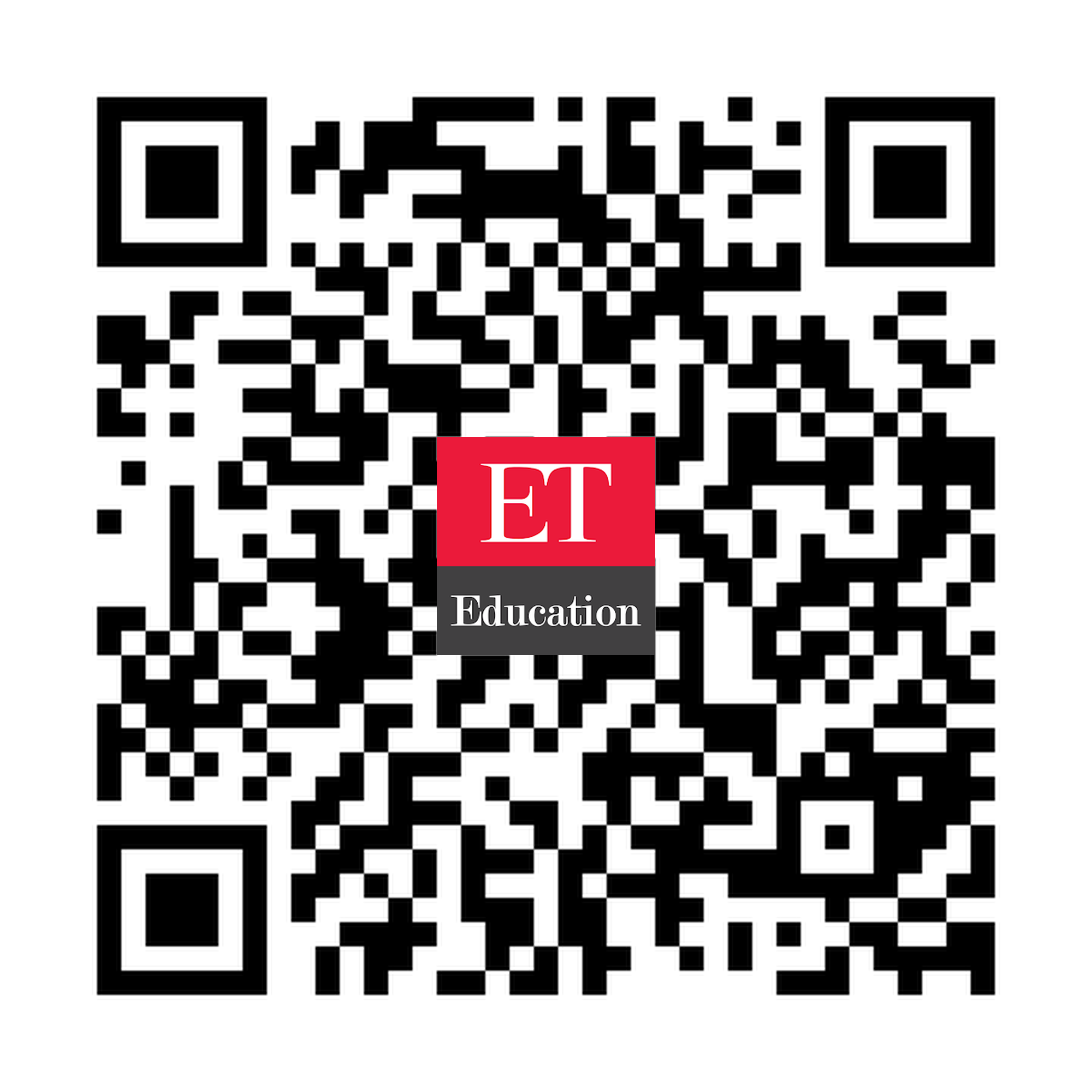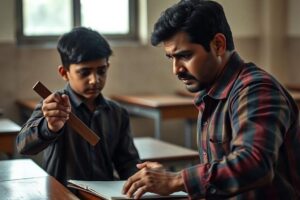
Amrita Vidyalayam’s story of change, ETEducation

By K Jayajothy, Principal, Amrita Vidyalayam, Coimbatore.
In an age where screens outshine playgrounds, Amrita Vidyalayam, Coimbatore, continues to uphold the human touch in learning. Rooted in Amrita’s values of compassion and holistic growth, the school strives to balance technology with timeless virtues.
“In the bustling era of technology, the playgrounds that once echoed with laughter and excited shouts now lie eerily quiet. Swings creak in solitude, and the familiar hum of bicycles zipping through neighbourhoods has been replaced by the silent glow of screens,” reflects K Jayajothy, Principal, Amrita Vidyalayam, Coimbatore. “Today’s children seem to prefer the company of gadgets over their peers, retreating into digital sanctuaries that promise entertainment, stimulation, and even a semblance of connection. But are these bonds with technology robbing them of the essence of real friendship?”
She believes that educators today are under a pledge to raise AI-natives as holistic learners. “They have taken a ‘vrata’ or oath to dedicate their creative energy to guiding the young generation until they reach enlightenment. Technology often stands ready to free them from redundant bureaucratic chore s, allowing them to devote quality time to their students.”
Recognising this balanced vision of value-based and technology-enabled learning, Amrita Vidyalayam, Coimbatore, was felicitated by The Economic Times at EDNXT Chennai 2025 as part of “Navigating the Future: Education’s Changemakers.”
Sharing her insights with ETEducation, K Jayajothy discusses the evolving teacher-student relationship and the enduring essence of human connection in an AI-driven world.
Q What was the vision that guided your school to become a trailblazer in education, and how has this vision shaped your journey so far?
Education, as it stands today, claims to lead students towards self-actualisation and self-efficacy. Yet, it attempts to achieve these objectives by overloading young minds with information and later extracting it during examinations. It also assumes that the marks students score in exams correlate with these lofty educational aims, by hook or by crook. Teachers must instead find time to plan curricula and develop instructional resources that engage AI-natives meaningfully.
As a passionate educator with expertise in strategic planning, leadership, administration, instruction, business operations, training and development, curriculum creation, and programme management, I have been the driving force behind the establishment and management of a school with special emphasis on cutting-edge methods for better learning. In my capacity as Head of Academics at our institution, we implemented a curriculum for more than 4,000 students, which benefited staff and parents alike. My extensive experience, diverse skills, and achievements have made a profound and remarkable impact on developing future-centric education.
Q Looking back, what turning points or bold decisions do you believe played a key role in your school’s success story?
In essence, preparing children for an unknown future involves cultivating adaptive, creative, and lifelong learners equipped with both intellectual and emotional resilience. By instilling these qualities, we empower the next generation to not only survive but to shape the world of tomorrow in ways we cannot yet imagine.
Our initiative on mindful eating and portion control is one such example. Easy-to-understand visual cues like the plate method – half vegetables, a quarter protein, a quarter grains and hand-size estimates such as fist, palm, and cupped hand help teens and parents gauge portion sizes intuitively.
They remember you, not the syllabus.
Creating parent-inclusive plans was one of the boldest decisions and a major challenge for me, from both parents’ and management’s perspectives. Our approach is simple yet effective. We partner with parents, ensuring trust and consent. This allows parents to feel at ease and be actively involved in crucial changes and decisions related to the school’s development plan. We follow a close “triangle approach” for event celebrations, communication, information, and development changes. We also organise PTA/PTM workshops and interactive sessions for parents.
Q Every success story has its challenges. What were some of the major hurdles your school faced on its path to becoming a leader, and how did you overcome them?
Limited resources, teacher resistance, time management, maintaining consistency, parental and community engagement, adapting to modern educational demands, setting healthy tech boundaries, and developing a value-based curriculum and activities were among the major challenges. We overcame them by modelling balance, encouraging critical thinking, and using technology to preserve tradition while preparing students for the future.
Q How do you strike a balance between preserving traditional values in education while integrating cutting-edge practices like technology-driven learning or skill-based programmes?
Today’s youth face an array of challenges in an increasingly complex world – academic pressure, social media stress, relationship issues, body image concerns, generation gaps with parents, and exposure to unhealthy habits like smoking or drinking, among others. I often hear their voice of uncertainty saying, “I don’t know what to do.” It seems as though they are in a rush to know everything instantly.
In this era of instant gratification, it is tempting to seek constant entertainment and validation from others. Let me share an anecdote: I met a teenager recently who was struggling with academic pressure and motivation. He realised that waiting for “someday” was holding him back. My dear youth, waiting for someone else to make a difference will not help – the moment to act is now, and that someone is none other than you.
Q Could you share one or two innovative practices that truly set your school apart and helped it gain recognition at “Navigating the Future: Education’s Changemakers”?
Future-Ready Skills with Value Integration
We practise “Future Skills Labs”, where students learn coding, problem-solving, robotics, and AI – but each project is linked to a real-world ethical or social value.
Examples include:
- A robotics challenge on “Technology for Kindness”, where students build bots to assist the elderly.
- Digital storytelling projects that preserve local traditions.
- “Tea with Teachers” sessions where students share goals, doubts, and learn to balance ambition with compassion.
- Monthly mentorship circles with teachers and community members discussing life skills such as decision-making, resilience, respect, and responsible tech use.
Through such practices, students learn innovation with empathy – blending modern skills with moral grounding.
Q What does this recognition of “Navigating the Future: Education’s Changemakers” mean for your school, your teachers, and your students, and how do you plan to take this legacy forward in the future?
The digital age has ushered in a new era of learning, transforming the way knowledge is acquired and shared. Online courses, interactive platforms, and hybrid learning models are reshaping education. As we move forward, it is essential to ensure equitable access, maintain high standards, and balance the advantages of digital learning with the human touch of traditional education.
Our focus continues to be on:
1. Students – Recognising young innovators and responsible digital citizens
How: Celebrate students who show creativity, adaptability, and ethical use of technology. Introduce awards like the “Future Navigator Award” for those who balance academics, digital skills, and social responsibility.
Why: Encourages students to see success not merely as achievement but as responsible growth in a changing world.
2. Teachers – Recognising guiding mentors for tomorrow
How: Honour teachers who integrate future-ready skills (AI, STEAM, critical thinking) with traditional values. Host “Teachers of Tomorrow” recognition events highlighting innovative practices.
Why: Appreciates teachers as lifelong learners shaping students to thrive in both digital and moral worlds.
3. Parents – Recognising partners in future education
How: Acknowledge parents who support balanced tech use at home and participate in school innovation programmes. Introduce “Parent Partnership Certificates” to encourage positive digital habits.
Why: Reinforces the idea that navigating the future is a shared journey between school and family.
Source link




